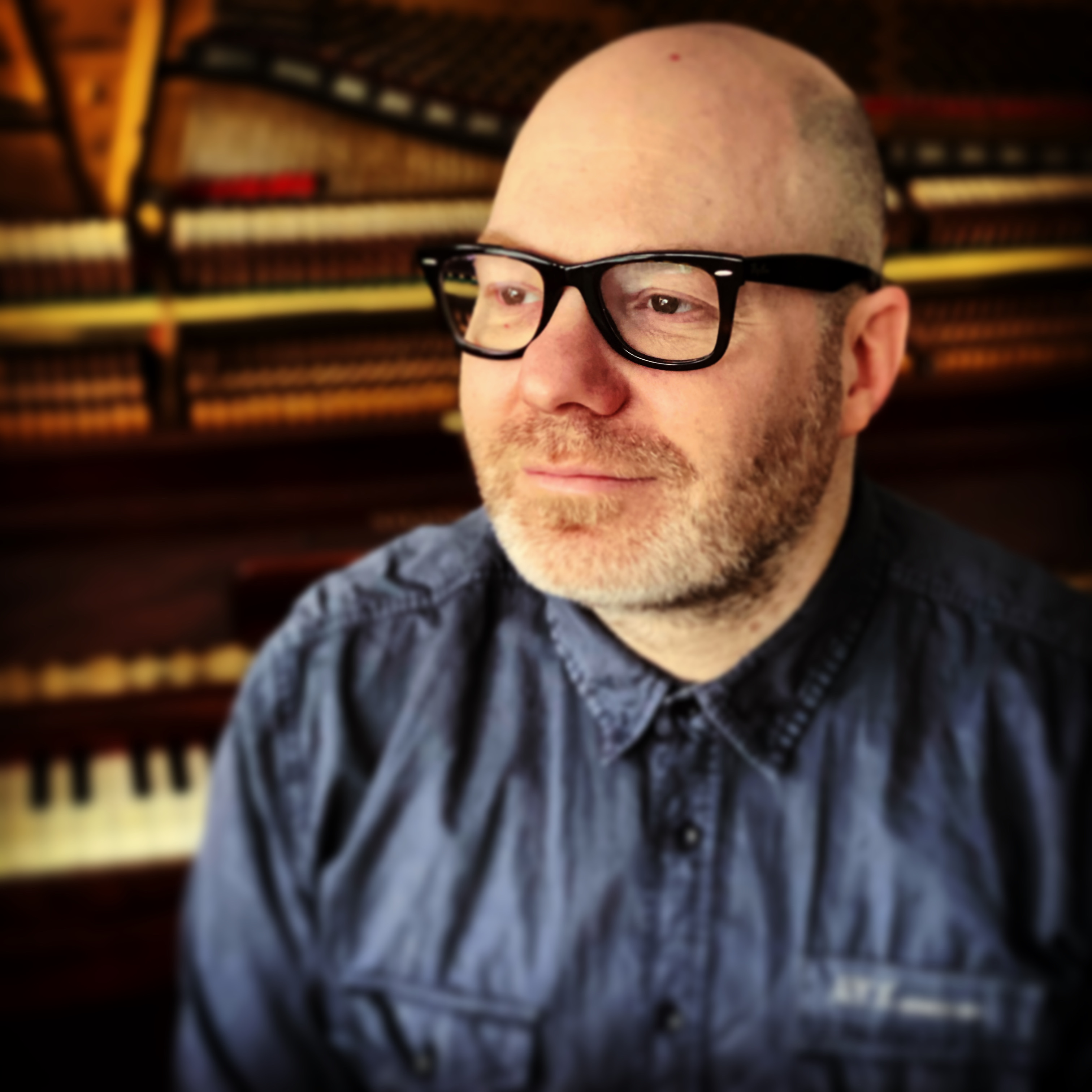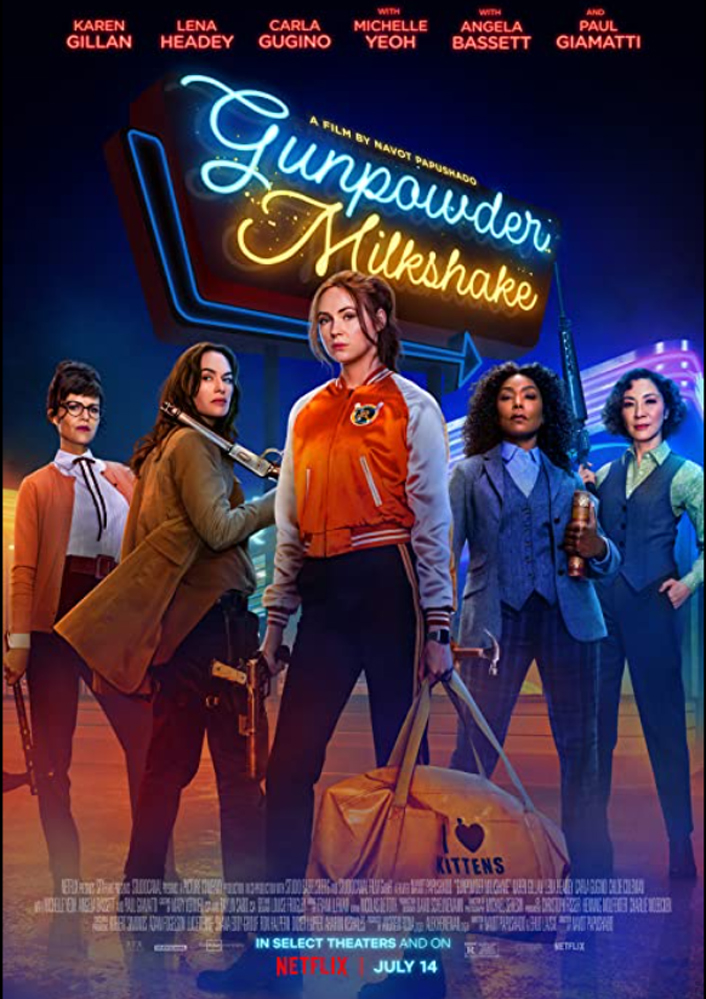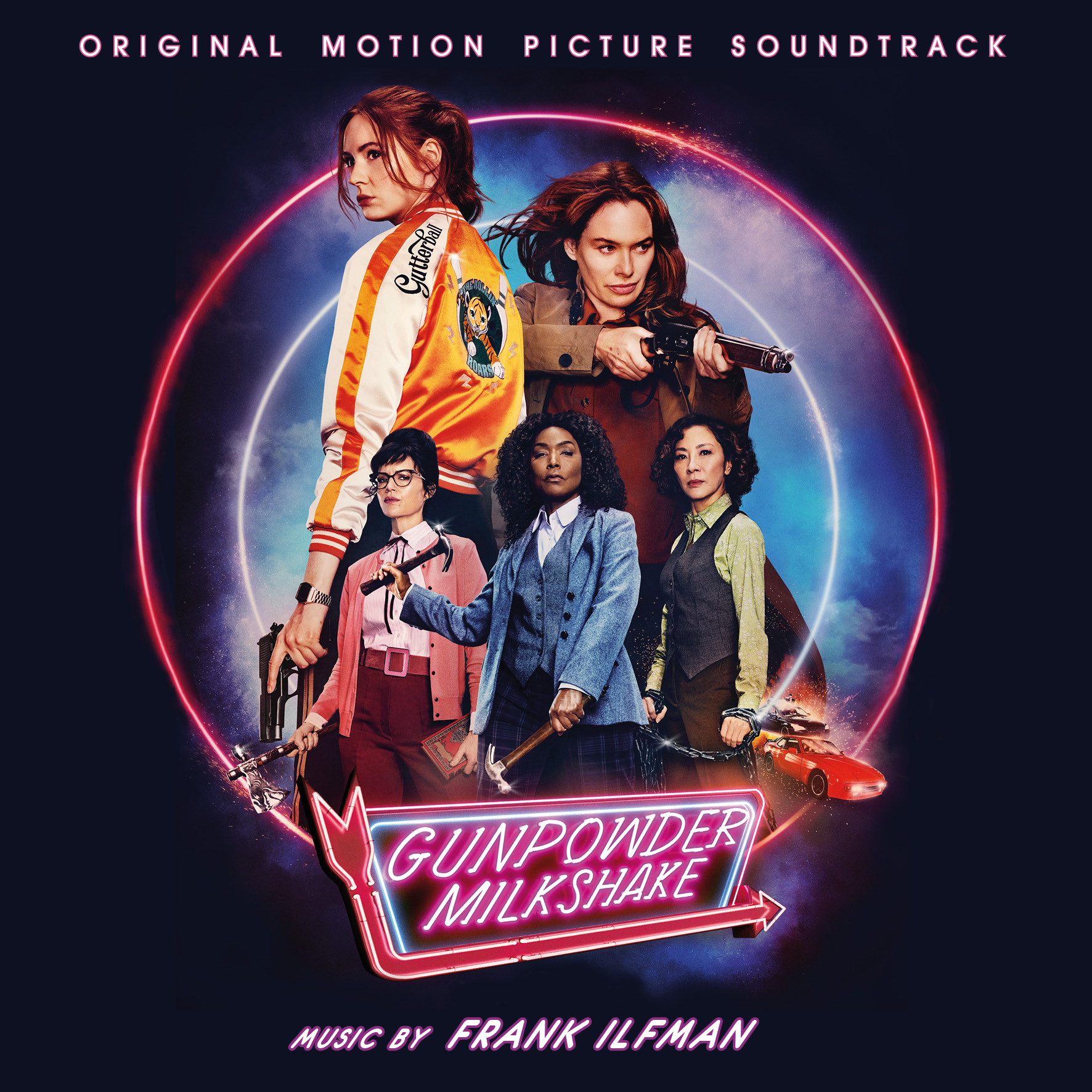July 13, 2021
Frank Ilfman: Musical Style & Influence for GUNPOWDER MILKSHAKE
Interview by Randall D. Larson
Frank Ilfman has scored numerous TV dramas, documentaries, and feature films including the hit black comedy horror, BIG BAD WOLVES, which saw him win the coveted Saturn Award for Best Original Music in 2014. Frank’s innate ability to forensically diagnose how music can best contribute to the atmosphere of a film, coupled with his ability to create strong orchestral themes undercut with a brooding melancholy, has proved the perfect musical companion to projects in the horror and thriller genres.
Frank scored the critically acclaimed Lionsgate horror film GHOST STORIES directed by Jeremy Dyson and Andy Nyman, starring Martin Freeman and Paul Whitehouse. Other recent credits include the original music for the Legendary Pictures Fanfare logo, the second season of the Israeli TV series MERMAIDS, thriller THE OPERATIVE starring Diane Kruger and Martin Freeman, and drama RORY’S WAY starring Brian Cox and Rosanna Arquette. He has recently worked on the documentary feature SPEER GOES TO HOLLYWOOD, which is screening in competition at this year’s Berlinale (soundtrack released on MovieScore Media), and has just scored the action thriller GUNPOWDER MILKSHAKE, starring Karen Gillan, Angela Bassett, Lena Headey, and Michelle Yeoh, reuniting him with director of BIG BAD WOLVES.
Scarlet: You are an incredibly impressive young woman. There’s not a single person on Earth I’d rather kill people with.
Sam: Thanks, mom.
– GUNPOWDER MILKSHAKE
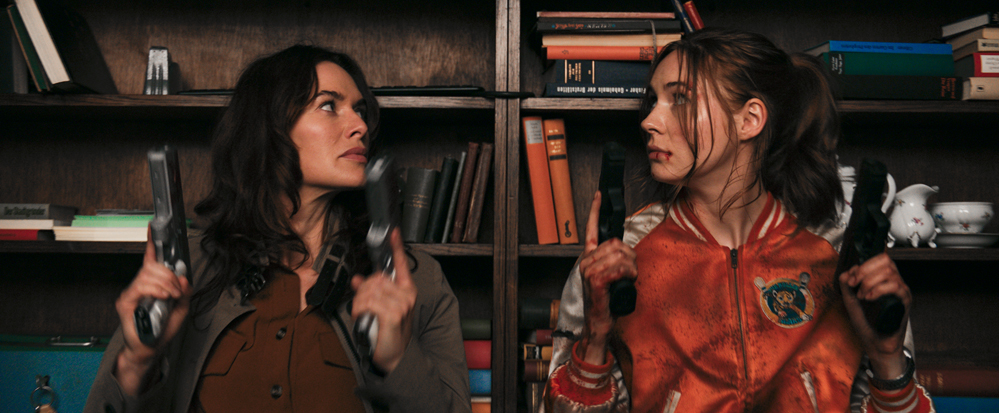
Q: You’d worked with director Navot Papushado on RABIES, BIG BAD WOLVES and THE ABCS OF DEATH 2. How did that previous relationship aid you in preparing the musical score for GUNPOWDER MILKSHAKE?
Frank Ilfman: RABIES was kind of a rescue job which was done very quickly. We started developing a working method on BIG BAD WOLVES and it carried over into GUNPOWDER. The way we’ve usually done things is: he will discuss the film with me – it could be prior to filming or when he’s doing prep, and we’ll start thinking music-wise. There may be a variety of styles and things like that, there could even be songs as well, not just temp scores. We’ll create a playlist that we each start dropping things into that we think can work, and that playlist will be adapted throughout the time, and then it’ll go back to other things that we’d thought at first, so it will be quite eclectic. Then we get a sense of the direction we want to go with the score and he’ll try with the music editor to temp some of it from the playlist and see if it works. Once they start getting a cut going I may be already doing some early mock-ups and ideas and they’ll temp that into the cut and we’ll see what works, what doesn’t work, and if we’re on the right direction. That’s usually the working process that we’ve established. I don’t always get a script – we will just meet up and have a chat about it, because we’re friends outside of our working relationship, and we’ll start discussing musical ideas. Navot is very musically oriented when he does a film, so he knows what musical direction he wants and what the music’s role is in the film. It’s usually trying to take all the elements and establish some sort of character within the music that will work with the film.
Q: Navot Papushado’s directorial style on this film is especially stylized, even more so than on BIG BAD WOLVES, and your score’s retro-modern energetic-noir vibe fits it very well. What was his brief to you about the kind of music he was looking for in this film?
Frank Ilfman: GUNPOWDER is a genre blender the same way BIG BAD WOLVES was. It’s a combination of films – we have that, as you say, retro vibe to it, then we’ve got a bit of that Spaghetti Western feeling in some of the cues, as you’ve seen, and it’s still modern. Then you’ve got something of a comic book feel to it as well, so it’s a combination of genres, but with a through line of the story. When I went to Berlin – they were first filming in Berlin, and all the pre-production was done there – so we met and we started playing tracks. The idea was, besides trying to do a homage to Morricone and Spaghetti Westerns, we were also thinking about Stelvio Cipriani and some of the French composers like Michel Legrand, that kind of style. We wanted to do a fusion of those kinds of ‘60s Italian/French style scores and give it a bit of that pop flavor – and then on the other side we’ve obviously got the big orchestral kind of film noir style of Bernard Herrmann and Anton Karas as well. The idea was to try to create something that would work when blended with another blend, but the result will have its own character.
Because there are so many characters in this film, we thought the best idea would be that each character, or group of characters, would have their own signature tune or sound, so it would be very recognizable when you see them on screen. It was about incorporating different sounds within different cues so they’re always interweaving with one another.
Q: Your main theme – Sam’s theme – is introduced briefly with a compelling keyboard arrangement near the start of the movie. You return to that same version of the motif, after several different variations, at the end of the movie. How did you come up with this theme and its distinct treatments?
Frank Ilfman: Sam [Karen Gillan] is this assassin but she wears this dark coat and a hat, so I thought something great would be to give her a sound like John Barry used in THE IPCRESS FILES – with a dulcimer but then also create more of a unique sound by combining it with a baroque harpsichord and a cimbalom, which is what Ennio Morricone used to use as well. They always played in unison with a certain balance and a few vintage amps to get that old sound. So besides that being Sam’s theme, it also would be the Gunpowder theme in a way. That sound is playing in almost every cue, in one way or another, even when Sam is chasing the mobsters. There’s kind of a baroque feel at the end that plays on those instruments, so there’s always some sort of reference to the sound. It’s a theme that plays throughout but it’s always some sort of a variation.
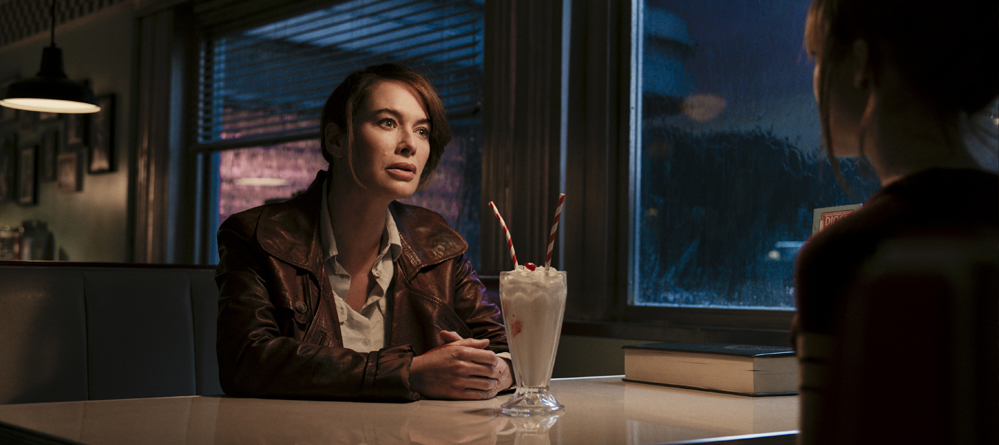
Q: The music for the first big fight scene in the bowling alley is really exciting, with its mariachi movements, Morricone-esque “Ecstasy of Gold” connotations, and the “We Can Fight!” chorus. What was the genesis of this stylistic music?
Frank Ilfman: That was a hard one because we couldn’t find a temp for that. Nothing really worked… We tried some film scores and rock cues, but nothing really meshed. It made it just another kind of action scene. The whole situation for that bowling alley fight is almost like a Western, when Sam meets the goons there and there’s a standoff, so the piece I wrote for that earlier was a kind of Morricone standoff tribute, which is later developed into the climax at the end in the diner, where the Librarians are standing off against McAlester [Ralph Ineson]. So then I got the idea, and I said to Navot, “If we go to this Western thing, why don’t we then continue that and do a variation; like what if “Ecstasy of Gold” had been done to a fight scene, but in a more, punchy, rock way?” So that became part of the inspiration to try and do some sort of homage to “Ecstasy of Gold” but then we needed a different hook, because this fight has a bit of that comic relief in some of the action, so then I came up with this whistling hook.
Q: The mariachi tone reappears a bit but some of the later fight scenes are given rather different treatments. Would you describe the musical differences you’ve given to varied fight sequences?
Frank Ilfman: The main mariachi stuff is in the clinic fight, when the goons, after having beaten her up in the bowling alley, discover Sam’s at the medical clinic and they’re coming to get her. That scene becomes almost like a mariachi band meets a flamenco group and an orchestra! Those two fight scenes were a bit unique and a bit more comical, but then the Library fight near the end was treated more seriously, and that one is like a full-on action, life-or-death struggle. We decided we might as well utilize the full orchestra there and make it as aggressive as possible, so it’s not just a bunch of lady assassins kicking ass, but it’s a proper fight scene and it’s quite brutal. I wanted the music, with the orchestra, to reflect that it’s a brutal battle, especially on the first part of the fight, and then we have the part of the fight that plays beneath the Janis Joplin track (“Piece of My Heart”). That was supposed to be two songs, a David Bowie and a Janis Joplin, but then we replaced the Bowie with score because the score worked better there; but we kept the Janis Joplin track. Then I wrote this organ music that just kind of repeats and becomes bigger and bigger as we get to the big climax of the Library battle. So we wanted to progress from that kind of retro film noir vibe and wind up getting into a huge action climax. The music grows with those dynamics; it builds and that’s where the full orchestra starts really kicking in.
Q: What was your process of taking contemporary electronic scoring sounds and giving them an orchestral spin?
Frank Ilfman: Because it’s a blend of things, I wanted to somehow create a world where I can take literally different parts of the score – different sounds and elements – and incorporate those in different cues where they’ll still work and won’t sound out of place. So at some point… just before the big Library fight, I had the whole orchestra play this very upbeat music – so you’ve got the whole orchestra going through some amps to give it that kind of distortion crunchiness, and then in the big, big fight I put all these castañetas and all these mariachi sounds with the electronics, and I gave some of the electronics these kind of space delays and echoes to try and give them a bit of a different vibe.
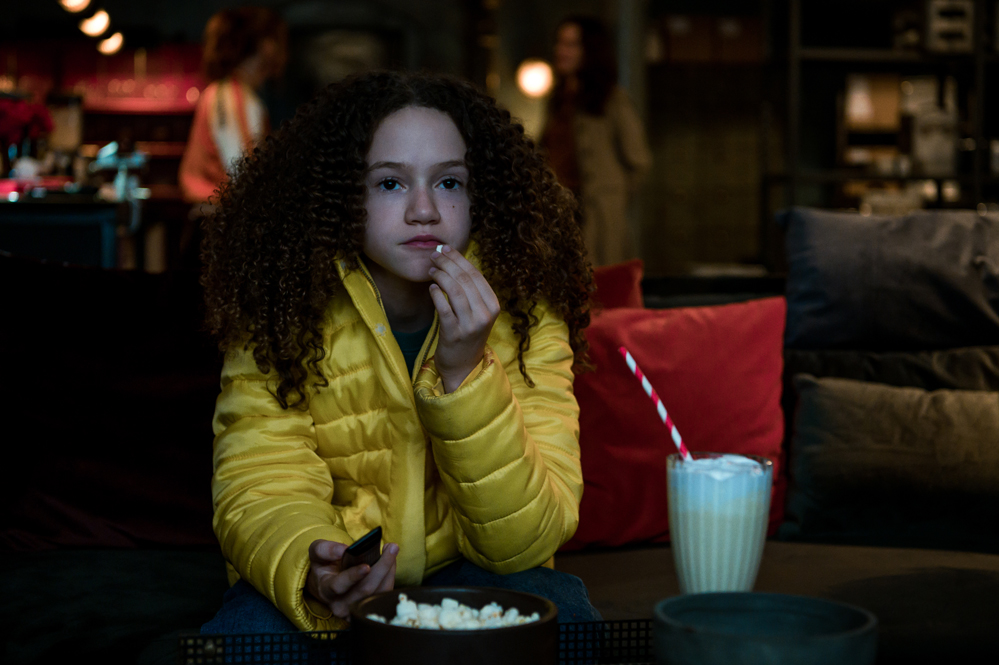
Q: How did you treat the character of Emily [Chloe Coleman], musically, throughout the score?
Frank Ilfman: We’ve got Emily’s character and then we have Sam & Emily and then we’ve got Scarlet [Lena Headey] & Sam – and their stories are all connected one way or another, it’s mother/daughter, and Sam feels obliged to take Emily under her wing. So the first thing that I wrote was actually Emily’s theme, and the idea was that I would then write more things for those other emotional stories, but as we started progressing and temping stuff with all the cues that I wrote, we started to realize that Emily’s theme also works really well for Scarlet and Sam, reminiscing about the past and their stories. So I did very slight variations on that – it’s actually the same theme, but it just feels very natural that it’s almost like a continuation of that story.

Q: There’s also a recognizable feminine sense in some of the music, with your use of female musician soloists in the orchestra and a recurring flavor of ‘80s female rock in some of the action scenes…
Frank Ilfman: Because it’s an all female-led cast I thought it would be actually quite cool if also the main featured players, besides the orchestra, would do a lot of the heavy lifting, almost like creating a kind of rock band. I call them “La Belle de la Beat” – Beauty and the Beat! We have female assassins and action and so on, but also we have lady rockers who can do as good as any rock band. The initial idea was that we would go into the studio and record it as a band, but sadly because of Covid we couldn’t do that; everything had to be done remotely.
Q: You mentioned the Janis Joplin song in there and I thought that worked really well, too. Your selection of songs fits into that same kind of a vibe I think.
Frank Ilfman: We had a lot of songs that Navot brought in and we talked them over. Some of them changed throughout the film, and some of them were there from Day 1. But it was all on the same playlist, so we’d see what worked and what didn’t work.
Q: What were some of the other musical influences that found their way into this score?
Frank Ilfman: Henry Mancini for sure, Les Baxter – he used to use a lot of these exotica instruments in his music and scores, and I always loved his work, so that was definitely an influence. There are actually some of those exotica bongos in all the mariachi stuff, which usually you won’t get in a mariachi band but I added a lot of these percussion elements. When they escape after the goon fight in the clinic, we still had those exotic instruments here and there. Georges Delerue and Juan García Esquivel were some of the influences for that ‘60s French lounge-type music and then, obviously, we had Anton Karas and Bernard Herrmann and John Barry for the kind of spy-movie vibe, and part of the electronics was like what Stelvio Cipriani used to do in 1980s Italy – we tried to do a bit of those types of electronics in there just to give it that flavor. And then with Alessandro Alessandroni, I tried to do some of these crazy vocals in some of the scenes, so these were all influences that we thought we can pay homage to and use in this film, which seemed to work quite well.

Q: Were the other main characters – Madeline [Carla Gugino], Scarlet, Florence [Michelle Yeoh], Anna May [Angela Bassett] (essentially Sam’s family) as well as Nathan [Paul Giamatti] – given their own themes, or were they included in a collective treatment as allies or antagonists to Sam?
Frank Ilfman: Nathan has his own theme, it’s called “The Firm.” It’s played in the lower registers of the orchestra, which is a bit similar to McAlester, although McAlester has a bit more distortion and quite thrashy brass playing. But The Firm has this dignified, almost orchestral arrangement but also it’s comic because they have the goons as part of their business. It was low register music, and we also had the tympanies playing under it for the goons. The Librarians have their own theme, which you can hear in the string notes in the opening credits. Those string notes are the Librarians’ theme; they come in again when Sam first arrives at the Library, and there it starts again in a different arrangement with some electronics, but it’s the same notation, and it comes again in the big battle towards the end, the same string lines, almost.
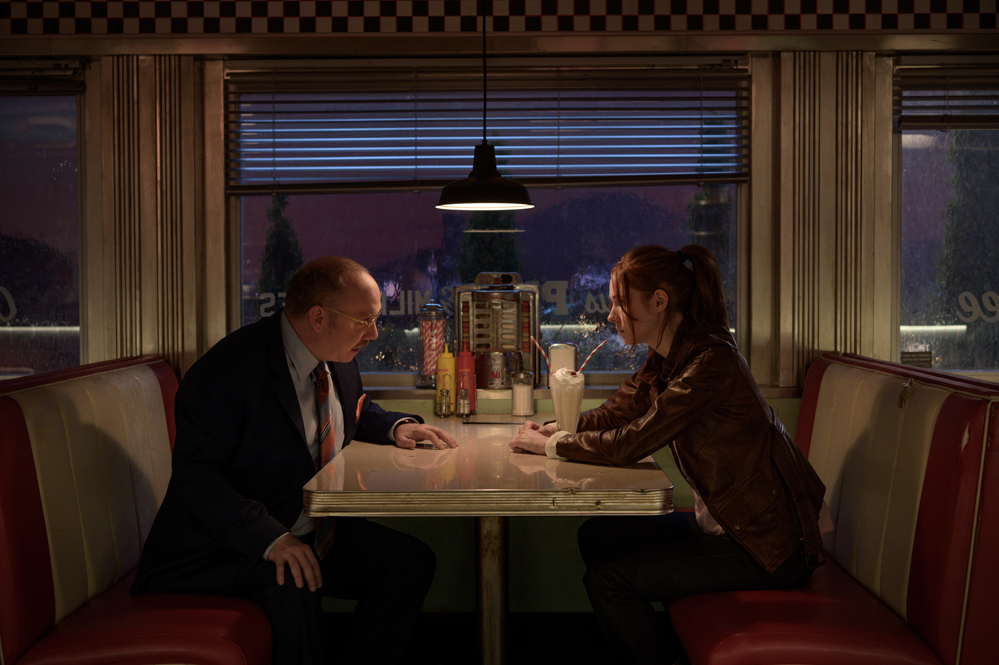
Q: The Library is introduced early on in the movie and later becomes the film’s climactic set piece. Were you influenced, musically, by its design and the unique usage it’s hidden tools are given?
Frank Ilfman: We didn’t want something specific for the structure but we did want something for the Librarians themselves. We had a score that, in one of the last re-cuts, we decided didn’t work, because we had score just before and right after it, so we dropped that because we felt we didn’t need anything specific for the Library building. But the idea was still that anything we do inside the Library should be fairly big, because it is a huge structure and it had a bit of that old, antique feel to it. So the idea was that the Librarians are quite classy, so it’s always strings and orchestra playing most of the time when we’re in the library.
Q: How did you handle the clinic fight, with its mix of comedy and desperate action?
Frank Ilfman: The clinic fight was quite a tough one because we had to make a few variations when scoring it. One variation was a bit too action-serious, and the other one was action-funny, and we tried to come up with something different? We both loved the trumpet, so I said to Navot, “Let’s do a mariachi track! Mariachi on its own wouldn’t work for a fight sequence, but we can create something that would work that would be like a mariachi-meets-flamenco meets rock or baroque type of thing.” So that was one of the hardest cues – I think that was the last cue I actually scored.
Q: What can you tell me about scoring the car chase in the parking garage, which follows the clinic fight. They’re both funny and also nerve-wracking…
Frank Ilfman: The car chase wasn’t temped originally. When I went to see a cut in Berlin, it didn’t have any music at all. They couldn’t find anything that worked. They finally temped it with a small bit from JOKER, a kind drone-y thing on a very small part, right when they stopped with the car. That was the only music. I remember saying to them, “I really like the sounds of the car, so maybe there’s no reason to score it.” But then when we started scoring the film I had an idea for that scene that I thought could work; that car chase as good as it is because in a lot of it they’re going in reverse, and I thought what if I take all my synths and played them in reverse. That would give a reverse-y feel to the whole scene, and it would emphasize a bit the humor that would then contrast against the heavy car sounds. So I did that, and that’s one of the cues that didn’t have revisions! The other cue that had no revisions was the long cue at the end of the film where Sam is pointing the sniper rifle at Nathan. Navot loved them as they were and they just went into the film.
Q: Where was the score recorded?
Frank Ilfman: We recorded it over a week at Air Studios in London with quite a big orchestra and choir. Jeff Atmajian, who did JOKER and does all the James Newton Howard scores, he orchestrated.
Q: Any final thoughts about your experiences scoring this film?
Frank Ilfman: I think one of the positive things that I can see coming out of being in lockdown and sadly with this whole thing is that basically it gave us more time to work on the score, compared to if we stuck to our given timeline back in the day before Covid. So it helped the film with all the recuts, which made it as snappy and better as it could be now, and I think that also helped to finalize the score and progress it with how they were cutting the film. That’s the positive thing that I can think of from that pandemic.
Special thanks to Andrew Krop and Kyrie Hood of White Bear PR for facilitating this interview.
The film premieres July 14th on Netflix. Milan Records will release the GUNPOWDER MILKSHAKE original motion picture soundtrack on the same day; a limited edition vinyl album of the score will be forthcoming at a later date from Mondo.
Related: See my interview with Frank Ilfman on scoring Jeremy Dyson and Andy Nyman’s GHOST STORIES, Navot Papushado’s BIG BAD WOLVES, and other earlier projects in my August 2018 Soundtrax column
Watch the trailer to GUNPOWDER MILKSHAKE:

